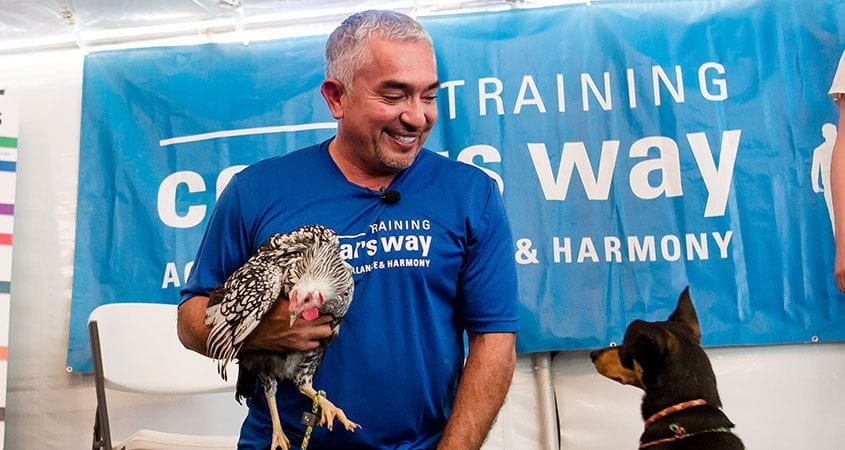In a few sentences, I’m going to give you a command and I want you to do it. It’s nothing complicated or too physical, so don’t worry. This is just a test.
Are you ready? Okay, here we go: Besloor.
Did you do it? Come on, it’s easy. Anyone can do it. Besloor! You’re not doing it, are you? I don’t know why you aren’t. I say the word, you do the thing… I can say the word louder, or point right in your face if that helps.
Besloor!
That doesn’t help, does it? You’re getting frustrated, I’m getting frustrated. Does this scenario seem familiar? It may, if you’ve ever tried to train your dog…
Don’t feel bad for not understanding what to do when you hear the word “besloor.” It’s completely made up and came from a random word website. But you have just experienced a little bit of what every dog goes through when we try to train them by tossing commands at them and hoping they’ll figure it out.
Dogs don’t come with the ability to understand the most popular commands automatically. They don’t even understand human words. They understand our energy and our intentions. Sometimes, when we try to train a dog, we get lucky and they do the thing when we say the word and they get a cookie and we think the dog has learned.
But in order to teach a dog tricks, it takes patience and repetition. They don’t necessarily realize right away that the word “sit” means to put their butt on the floor. What they realize is that when they put their butt on the floor, you gave them a treat and attention. If you’re not careful, this is when your dog will try to train you to reward them whenever they perform an action, whether you’ve asked them to or not.
Training Has Two Different Meanings
The real trick to training has nothing to do with the dog. It has to do with what we mean by the word “training” — and it can really mean two different things. In one sense, training just means teaching a dog tricks. Or, more technically, it means conditioning a dog to perform a certain behavior or behaviors in response to a particular stimulus. This can mean doing “shake” when you hold out your hand, or it can mean running an entire agility course in a particular order, with your subtle prompting keeping them on track.
But the other meaning that a lot of people think of when they say the word “training” really refers to a dog that is well-behaved. In effect, the “tricks” they want to teach their dogs are things like not jumping on people, not barking too much, not doing their business in the house, and so on. It should be obvious just from this description that this definition of training isn’t about getting a dog to do something in response to a stimulus, but getting them to not do something as a general way of behaving.
That is an entirely different trick, and one that you can’t teach a dog no matter how many times you say a word like “No” in response to a misbehavior. This type of training isn’t so much about trading cookies for stunts as it is about creating an environment in which your dog feels calm and safe, knows her place, and knows what to do or not do.
This is what I call giving a dog rules, boundaries, and limitations. It comes from earning your dog’s trust and respect, and from learning to understand how your dog communicates and what she’s telling you. I said before that patience and repetition were the keys to teaching dogs tricks. The keys to teaching your dog to behave are listening and communicating.
I could teach entire seminars on those subjects and how to use those skills — oh wait. I do! — but I’ve also provided an entire summary right on this site, where it says “Cesar’s Essentials” at the top of the page.
With the right reward, anyone can teach a dog how to come, sit, or stay. It takes a little bit more to teach a dog how to behave, but it’s well worth the effort. You’ll have a balanced, happy dog and the two of you will have a long, happy, connected relationship — and there’s nothing better about a dog than having that.
Stay calm, and get connected!











